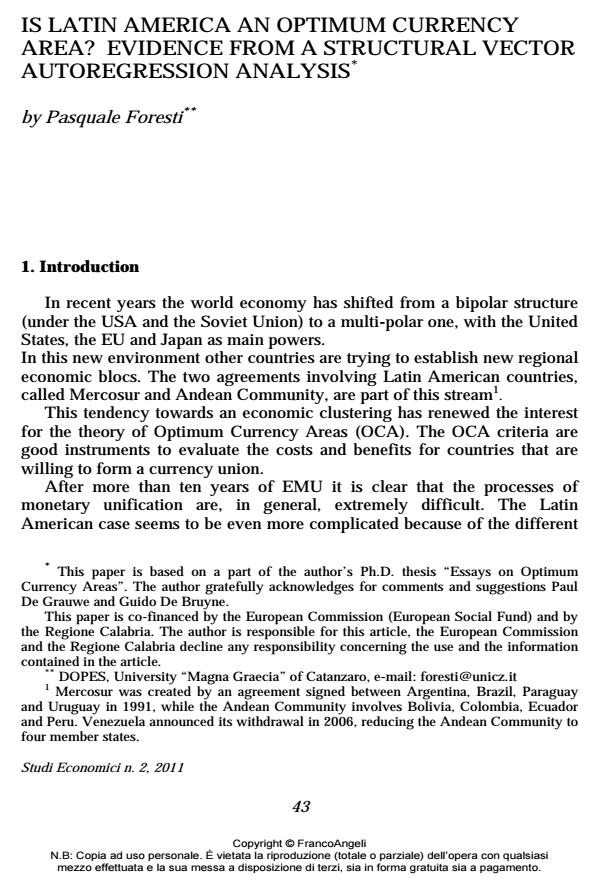Is Latin America an Optimum Currency Area? Evidence from a Structural Vector Autoregression Analysis
Titolo Rivista STUDI ECONOMICI
Autori/Curatori Foresti Pasquale
Anno di pubblicazione 2012 Fascicolo 2011/104 Lingua Inglese
Numero pagine 26 P. 43-68 Dimensione file 735 KB
DOI 10.3280/STE2011-104003
Il DOI è il codice a barre della proprietà intellettuale: per saperne di più
clicca qui
Qui sotto puoi vedere in anteprima la prima pagina di questo articolo.
Se questo articolo ti interessa, lo puoi acquistare (e scaricare in formato pdf) seguendo le facili indicazioni per acquistare il download credit. Acquista Download Credits per scaricare questo Articolo in formato PDF

FrancoAngeli è membro della Publishers International Linking Association, Inc (PILA)associazione indipendente e non profit per facilitare (attraverso i servizi tecnologici implementati da CrossRef.org) l’accesso degli studiosi ai contenuti digitali nelle pubblicazioni professionali e scientifiche
This paper evaluates the advisability of a monetary union in Latin America applying the theory of optimum currency areas (OCA). The analysis is based on the traditional OCA criteria and it suggests that there is no evidence for any monetary integration in Latin America even at a sub-regional level. Latin American countries have evidenced a low degree of trade integration and asymmetric co-movements among their shocks. Moreover, substantial differences in the speed of adjustment and in the size of shocks are found. Hence, higher policy coordination seems to be necessary before starting any economic integration process in Latin America.
Keywords:Optimum Currency Areas, Asymmetric Shocks, Latin America, sVAR. .
Jel codes:C15, C30, F15, F42
Foresti Pasquale, Is Latin America an Optimum Currency Area? Evidence from a Structural Vector Autoregression Analysis in "STUDI ECONOMICI " 104/2011, pp 43-68, DOI: 10.3280/STE2011-104003